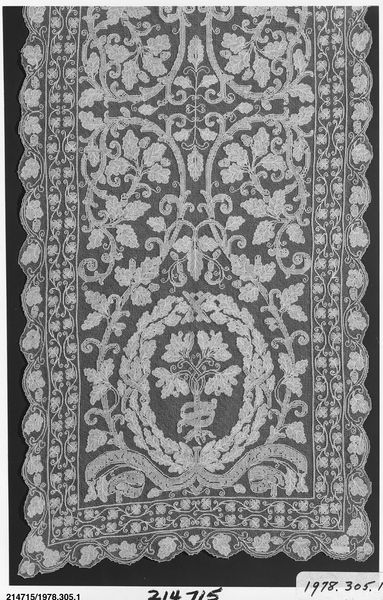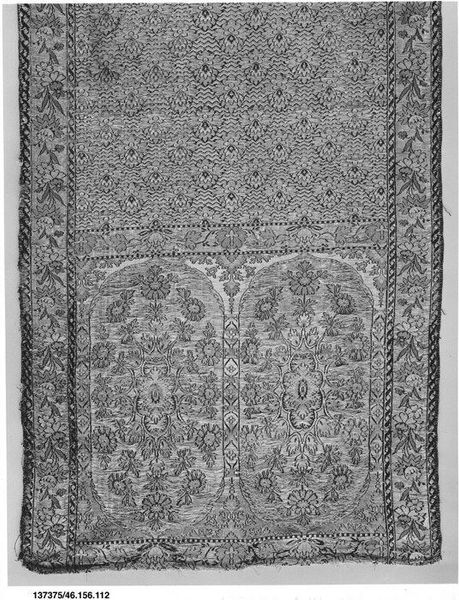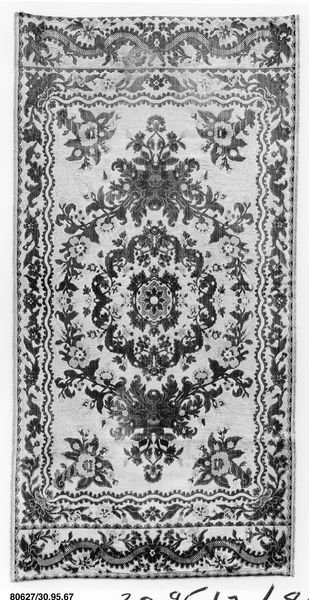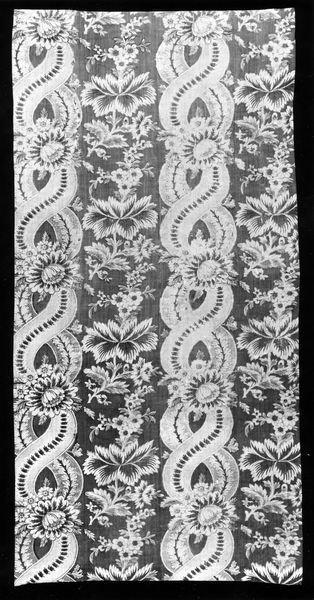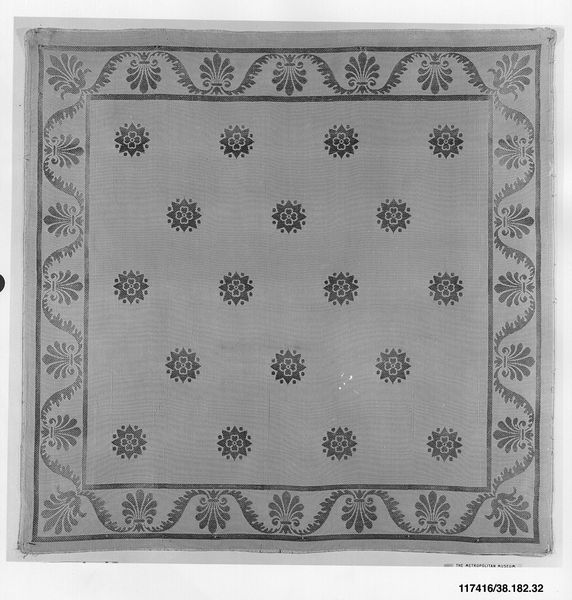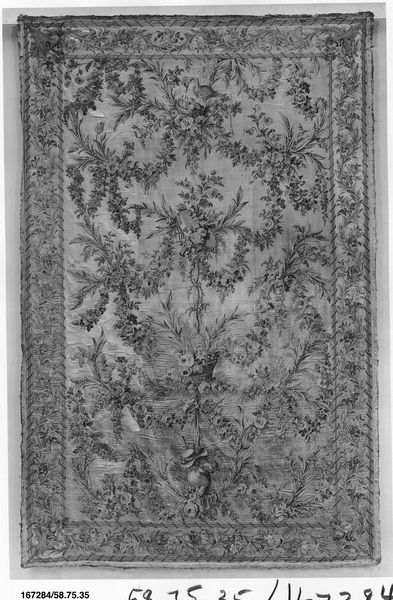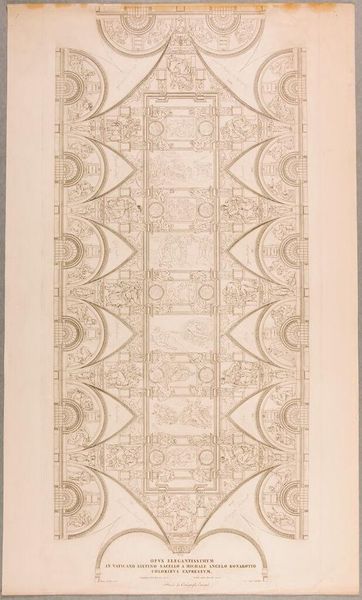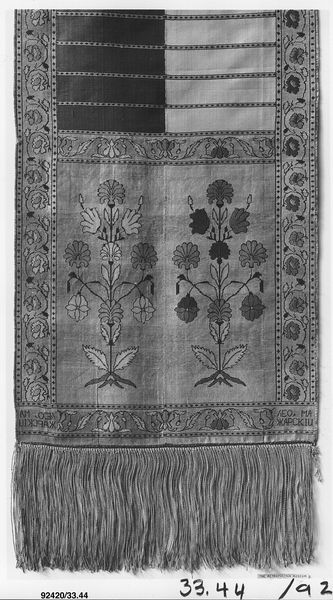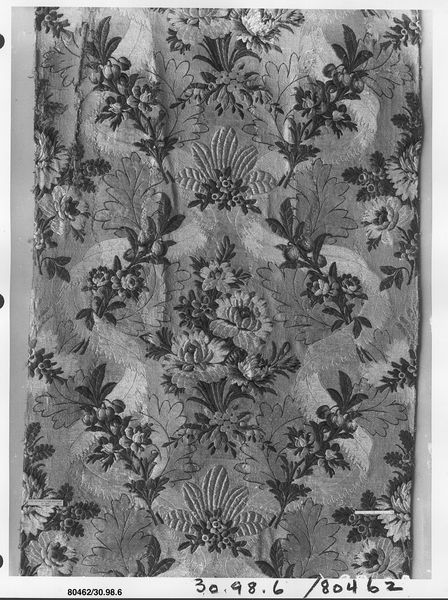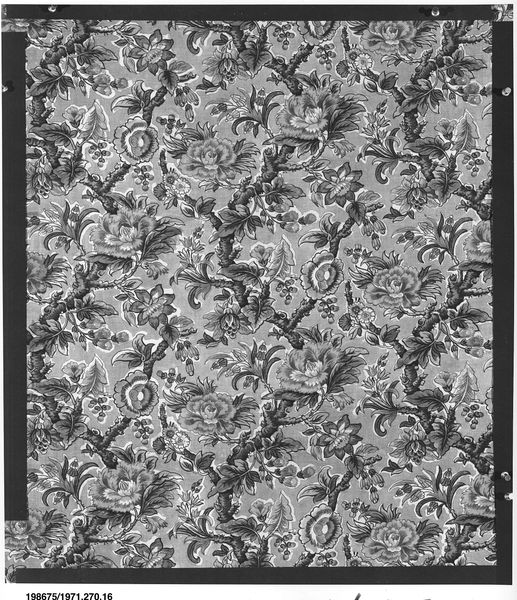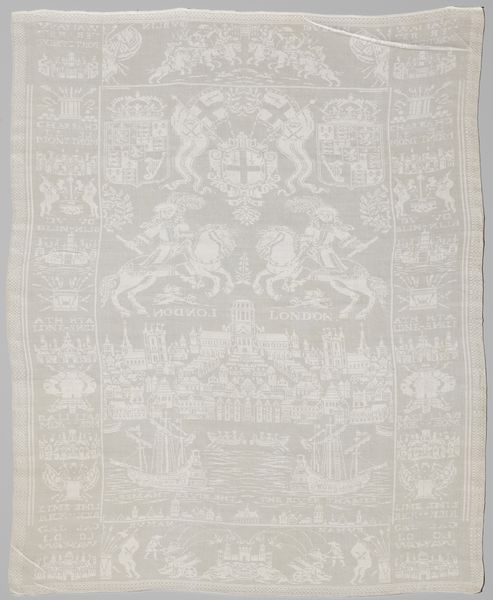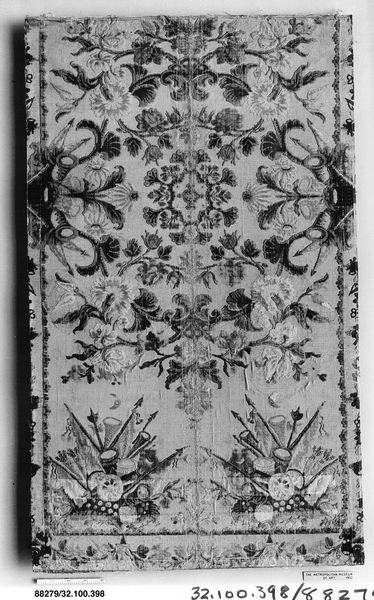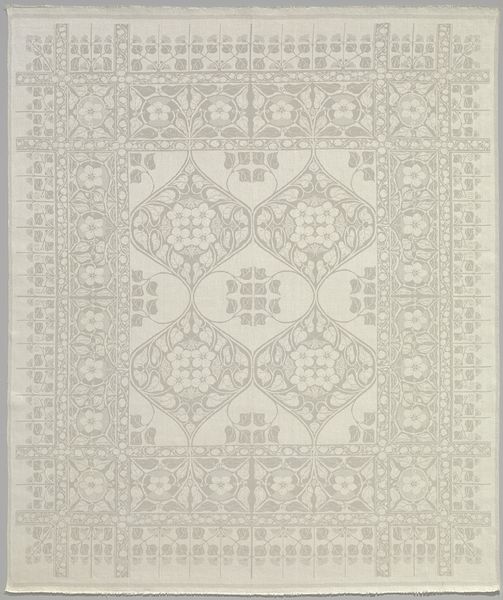
Dimensions: height 118 cm, width 87.5 cm
Copyright: Rijks Museum: Open Domain
Editor: This is a woven textile called "Servet met motief van rozen," or "Napkin with rose design" by an anonymous artist, dating from around 1750-1785. It's so delicate and the repeating pattern almost fades into the background. What does this napkin say to you? Curator: The repeating rose motif, especially during this period, speaks volumes about the social rituals surrounding dining and domesticity. Table linens like these were not merely functional; they were displays of wealth and refined taste, reflecting a growing mercantile class eager to emulate aristocratic customs. The weaving itself could have been a product of cottage industries, highlighting the labor that fueled these social performances. What do you think its pristine condition suggests? Editor: That it was perhaps not for everyday use but instead used for very special occasions. It is amazing to think about the textile connecting social class and labour. What do you think about the anonymity of the weaver? Curator: Exactly! Anonymity points to the suppression, or even lack of acknowledgement, of the labor that went into creating objects of luxury. The roses, almost a visual whisper, symbolize beauty but also a certain level of exclusivity within a patriarchal society where women played specific roles in household management and display. Consider how museums themselves display such objects. What narrative do you think they're upholding? Editor: It is an interesting observation... often, we see textiles as objects of craft, isolated from their context and the often gendered and undervalued labour that created them. We definitely need to be critical of these choices. I’ll think about this differently from now on! Curator: Absolutely. By understanding its cultural context, this simple napkin becomes a window into 18th-century social dynamics, prompting us to consider the power structures embedded within everyday objects.
Comments
No comments
Be the first to comment and join the conversation on the ultimate creative platform.

